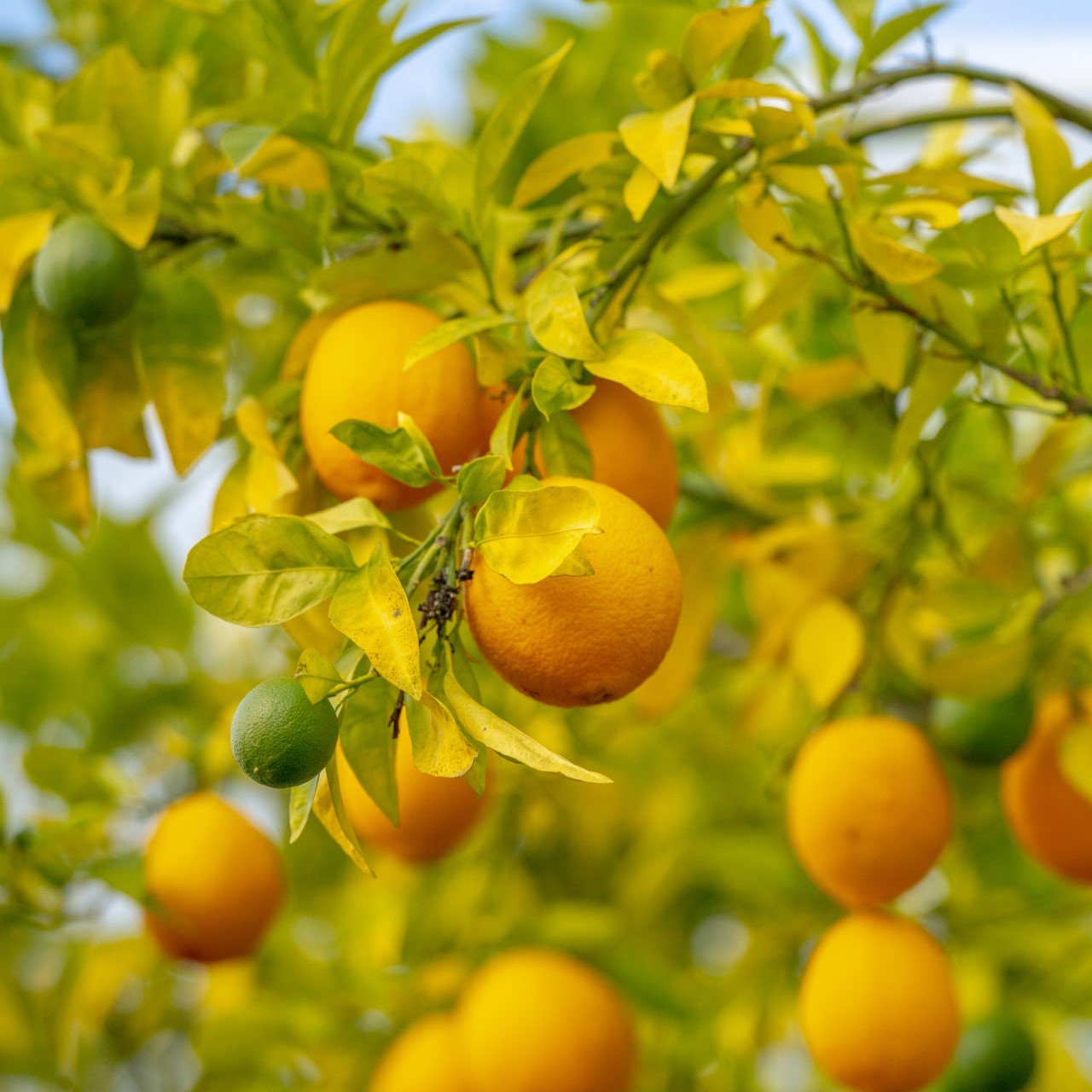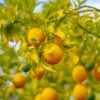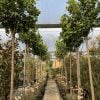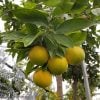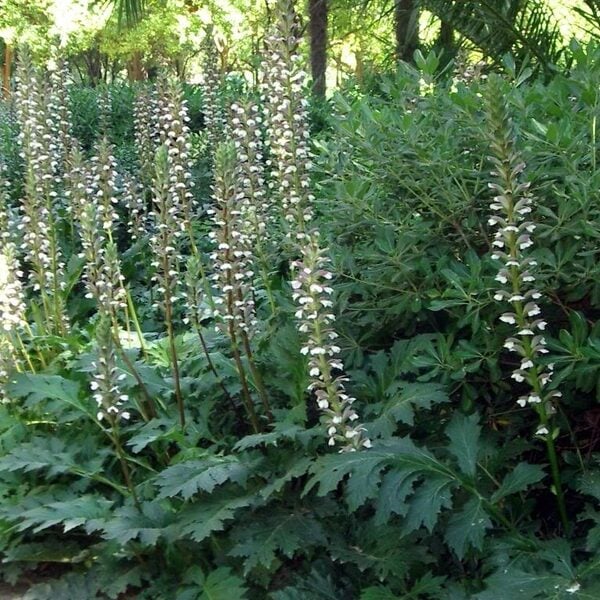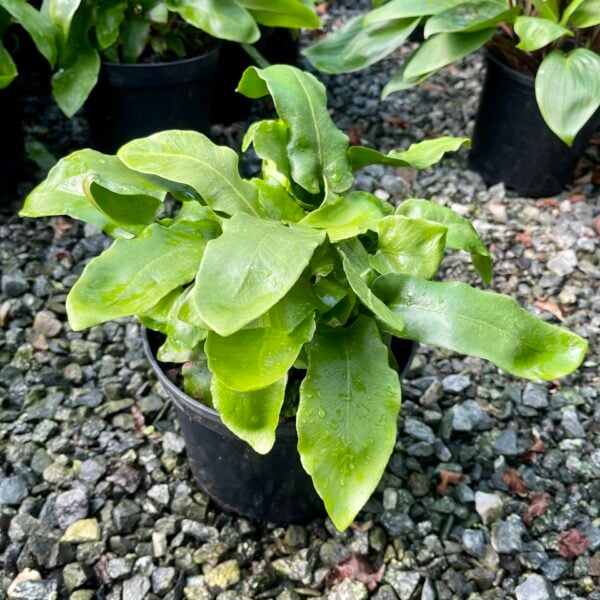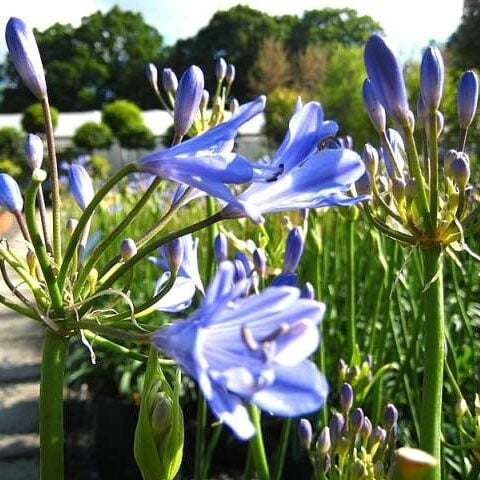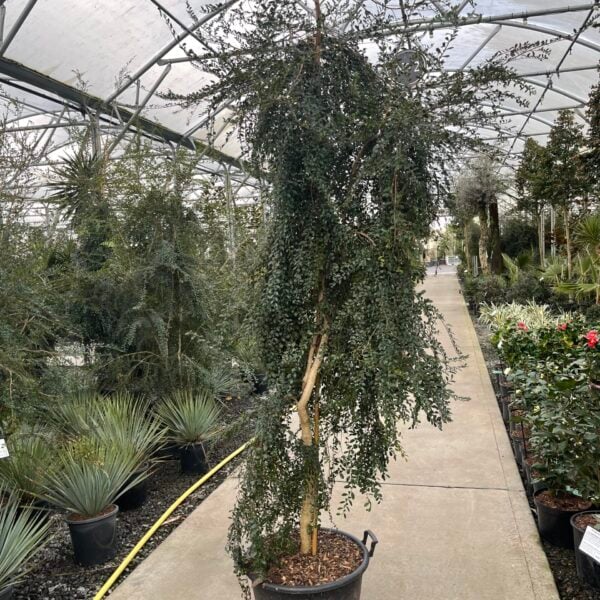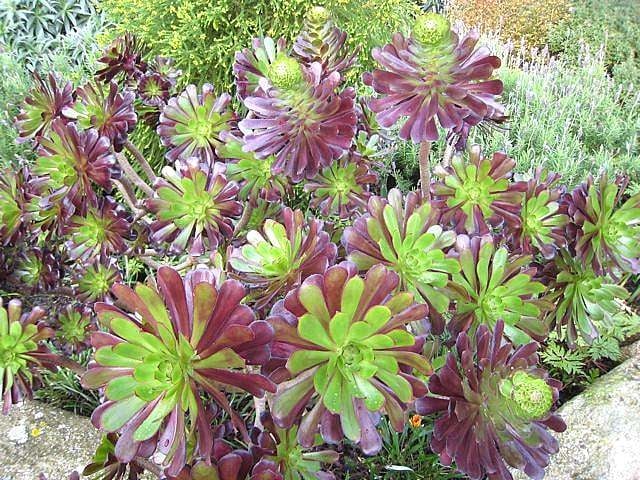Citrus Sinensis (Sweet Orange)
Edible Orange which needs to be grown in a conservatory or an orangery if you’re posh. Please contact us for stock availability and sizes.

Hardiness level Red
Citrus sinensis (Sweet Orange) is quintessentially exotic. A refined specimen as a full standard tree with heavenly-scented delicate blossom in spring accompanying glossy evergreen leaves and young stems. Growth can be quite rapid once established and oranges (in some form or other), will usher forth, too. If you’re lucky enough and have the right conditions you can cultivate quite impressive fruit. However, a conservatory is an absolute requirement or a large airy internal space with a substantial lightwell. Perhaps, like me, you have extravagant ambitions for an orangery. Memories of Margam Park spring to mind. The longest orangery in Britain and certainly one of the finest examples of classical architecture in Wales. At this point of writing, I believe it still houses some orange trees. Worth a visit for inspiration and to set you dreaming.
Citrus sinensis (Sweet Orange) has a complex history of horticultural interventions. The first murmurings of ‘sweet oranges’ were taken from Chinese texts likely dated around 314 B.C. and introduced to Europe from around the 10th century. They can be successfully grown in the UK despite the grandiose lengths early growers went to but precious plants such as this which are glasshouse-grown require particular care and attention. Such places with such plants are a draw for bugs. Keep an eye out and be prepared to act regularly. Give them as much light as you can and pair them with good solid terracotta pots. Citrus and terracotta have a timeless bond: it’s an aesthetic that just works. Potted, it’s also possible to move them outside in summer. Let them bask against a south-facing wall and make sure to bring them back into your conservatory or orangery before the first frosts.
It needs lots of light and may be prone to bugs because it will be in glasshouse conditions.
N.B. When clipping several plants with the same tool, have a bucket containing a 5% bleach solution and swish your blades around for 30 seconds between plants to sterilise them. This will help avoid the chance of cross contamination of disease.
As with all woody plants, plant high, exposing as much of the taper at the base of the trunk as possible. Allowing soil to accumulate round the base of a tree can be fatal. Keep very well watered when first planted.
Additional Information |
|
|---|---|
| Continent of Origin | |
| Features | |
| Flower Colour | |
| Light | |
| Plant Type | Big Leaves / Exotics, Edible, Evergreen, Flowers, Shrubs, Trees |
| Situation | |
| Soil Type | |
| Specialist Plants | |
| Tree Size | |
| Hardiness | |





